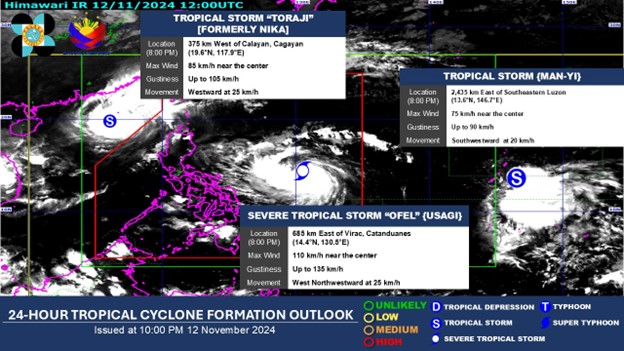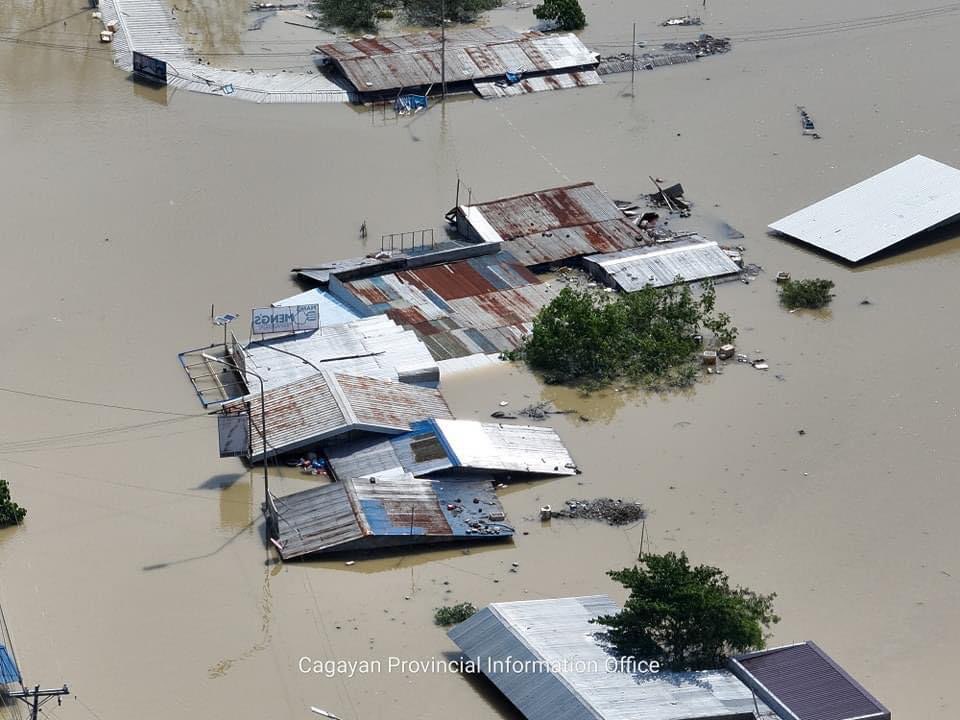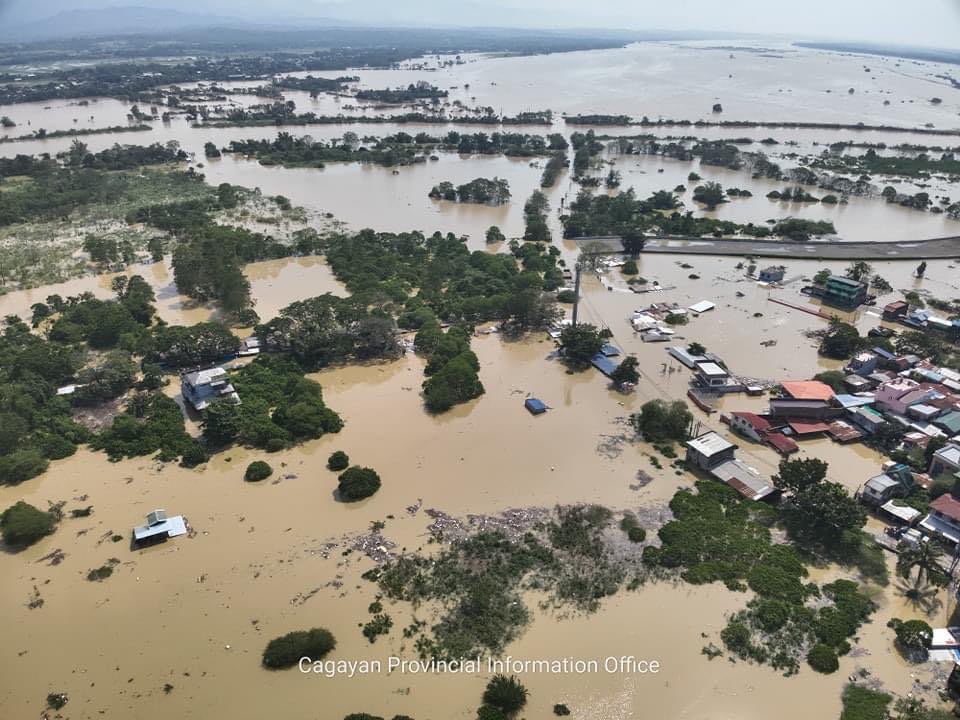Typhoon Nika (I.N. Toraji)
Situation Report
November 13, 2024
9:00 PM

On November 9, 2024, at 8AM, Low Pressure Area (LPA) east of Southern Luzon developed into Tropical Depression and Philippine Atmospheric, Geophysical and Astronomical Services Administration (PAGASA) named it Nika. It has intensified into a Tropical Storm the same day with maximum sustained winds of 65 km/hour and gustiness of up to 80 km/hour. At 11PM, it further intensified with maximum sustained winds of 75 km/hour and gustiness of up to 90 km/hour as it moves westward over the Philippine Sea east of the Bicol Region. Tropical Cyclone Wind Signal (TCWS) no. 1 was hoisted over Isabela, Quirino, the eastern portion of Nueva Vizcaya, Aurora, the eastern portion of Nueva Ecija, the eastern portion of Bulacan, the eastern portion of Quezon including Polillo Islands, Camarines Norte, Camarines Sur, Catanduanes, and the northeastern portion of Albay.
On November 10, Nika intensified into a Severe Tropical Storm (STS) with maximum sustained wind of 100 km/hour and gustiness of up to 125 km/hour. It was moving west northwestward at 30 km/hour. At 5AM, TCWS no. 2 was hoisted over the southeastern portion of Isabela and the northern portion of Aurora. TCWS no. 1 was raised in the southern portion of Cagayan, the rest of Isabela, Quirino, Nueva Vizcaya, the southeastern portion of Kalinga, the eastern portion of Mountain Province, Ifugao, the eastern portion of Pangasinan, the rest of Aurora, Nueva Ecija, the northeastern portion of Pampanga, the northern and eastern portion of Bulacan, the eastern portion of Quezon including Polillo Islands, Camarines Norte, Camarines Sur, Catanduanes, and the northeastern portion of Albay.it continued to move westward as it nears typhoon strength with maximum sustained winds of 110 km/hour and gustiness of up to 135 km/hour. It decelerated over the Philippine Sea east of Aurora and at 8PM, TCWS no. 3 was lifted in 2 municipalities in the southeastern portion of Isabela and 3 municipalities in the northern portion of Aurora.
On November 11, Nika rapidly intensified into a Typhoon over the sea east of Aurora with maximum sustained winds of 120 km/hour and gustiness of up to 150 km/hour. TCWS no. 4 was lifted in the northernmost portion of Aurora, the central and southern portions of Isabela, the southeastern portion of Abra, the central portion and eastern portions of Mountain Province, the eastern portion of Ifugao, and the western and southern portions of Kalinga. TCWS no. 3 was raised in the northern portion of Aurora, the northeastern portion of Nueva Vizcaya, the northern portion of Quirino, the rest of Isabela, the southwestern portion of Cagayan, the rest of Abra, the southern portion of Apayao, the rest of Kalinga, the rest of Mountain Province, the rest of Ifugao, the northern portion of Benguet, the southern portion of Ilocos Norte, and Ilocos Sur. TCWS no. 2 was in effect in the central portion of Aurora, the rest of Nueva Vizcaya, the rest of Quirino, the northwestern and eastern portions of Cagayan, the rest of Apayao, the rest of Benguet, the rest of Ilocos Norte, La Union, the northeastern portion of Pangasinan, and the northern portion of Nueva Ecija. TCWS no. 1 was hoisted over the rest of Aurora, the rest of Cagayan including Babuyan Islands, the rest of Pangasinan, the rest of Nueva Ecija, Bulacan, Pampang, Tarlac, the northern and central portions of Zambales, Metro Manila, Rizal, the eastern portion of Laguna, the northern and eastern portion of Quezon including Polillo Islands, Camarines Norte, and the northeastern portion of Camarines Sur. At 8:10AM, Typhoon Nika made landfall in Dilasag, Aurora with maximum sustained winds of 130 km/hour and gustiness of up to 180 km/hour. It navigated Northern Luzon moving Northwestward at 25 km/hour. TCWS no. 4 was in effect in areas along the path of Typhoon Nika such as the northernmost portion of Aurora, the central and southern portions of Isabela, Kalinga, Mountain Province, the northern portion of Ifugao, the central and southern portions of Abra, and the northern and Central portions of Ilocos Sur. TCWS no. 3 was raised in the central portion of Abra, the northern portion of Quirino, the northeastern portion of Nueva Vizcaya, the rest of Isabela, the southwestern portion of Cagayan, the southern portion of Apayao, the rest of Abra, the rest of Ifugao, the northern portion of Benguet, the southern portion of Ilocos Norte, and the rest of Ilocos Sur.
It exited the PAR and weakened into a Tropical Storm before the 5PM bulletin issued by the PAGASA on November 12. However, another tropical cyclone has entered PAR on the same day. It was given the name Tropical Storm Ofel and has since intensified into a Severe Tropical Storm. Another tropical cyclone is closely being monitored by the weather bureau that may affect the same regions affected by Typhoon Nika.
Sources: PAG-ASA, National Disaster Risk Reduction Management and Council (NDRRMC), Rappler
Affected Populations

According to the National Disaster Risk Reduction Council (NDRRMC), a total of 38,811 families or 151,515 individuals were affected in 5 regions. A total of 36,146 individuals were pre-emptively evacuated in 4 regions. 15,602 people were displaced where 9,334 were served in 196 evacuation centers. 6 areas in Region 3, reported flooding, two of which are situated along the river.
30 out of the 42 road sections and 36 bridges were deemed not passable as of this writing. 20 seaports were declared non-operational. 70 passengers, 9 rolling cargoes, 8 vessels, and 4 motorbancas were stranded. 31 cities/municipalities reported power interruption and only 6% is currently restored. NDRRMC also reported 85 partially damaged houses in 3 regions, 81 of which are from Region 3.
On November 11, Provincial Disaster Risk Reduction and Management Council reported 5,244 individuals were forced to evacuate. As Typhoon Nika made landfall, Dilasag, Aurora, one of the areas that was placed in TCWS no. 4, experienced strong winds coupled with heavy rainfall. The heavy rainfall brought about flooding in the area. Isabela, where 5,220 individuals were evacuated, also experienced strong winds and heavy rain, resulting to toppled trees. Abuan River in Iligan City overflew as it rained nonstop.
According to the residents of Abulug, Cagayan, Typhoon Marce brought strong winds but no heavy rain, however Typhoon Nika brought both strong winds and intense rainfall causing flood. Typhoon Nika caused irreparable damage as residents have not yet recovered from the onslaught of Typhoon Marce which caused partial to severe destruction of their houses. Cagayan Provincial Information Office (PIO) reported that four houses were totally washed out in Baggao due to rain-induced landslide. There was report on a rice field being gradually washed out as flash flood occurred. In Lal-lo, Cagayan, 384 families or 1,350 individuals were evacuated as of November 12. It was also reported that parts of the land near the river slowly collapsed as the water from the river overflows. Tuguegarao City was flooded due to the Cagayan River overflowing. 3,602 individuals or 956 families in 24 barangays were affected.

The residents of Cagayan Valley have not yet recovered from the aftermath of Typhoon Marce when they were struck by Typhoon Nika. In a few days, Severe Tropical Storm Ofel is expected to intensify before it comes near the Northern Luzon. Another tropical cyclone is also entering PAR on the coming week.
Source: NDRRMC, People’s Organization, Cagayan PIO, Rappler
Emergency Response Efforts
- CDRC along with the affected regional partners, continues to monitor the situation and has commenced issuing situation reports.
- CDRC also facilitates SCLR Proposals to enable access of people’s organizations for provision of hot meals.
- Friends of CDRC facilitates call for support for the individuals affected by Typhoon Nika.
Resources Available
- Prepositioned goods at the CDRC Warehouse
- Monetary and in-kind donations
Expressed Needs
- Immediate Shelter Repair Kit
- Relief goods and hygiene kits
Coordination
- Regional Partners
- People’s Organizations
- 17 member organizations of the Citizens’ Disaster Response Network (CDRN) nationwide
Contacts
- Rosalia “Ross” Singcol, Deputy Executive Director – rosssingcol@gmail.com – 09854359628
- Glenn Latoza, Field Operations Department Head – fod.cdrc1984@gmail.com – 09662343358
